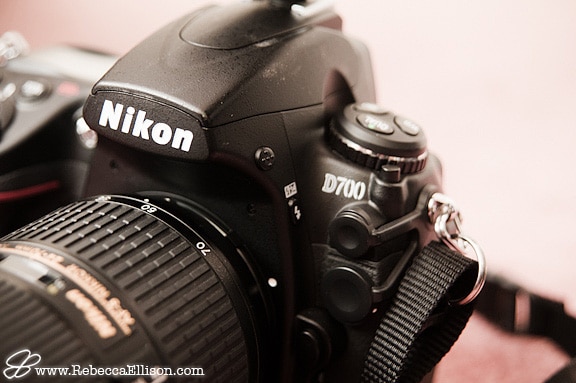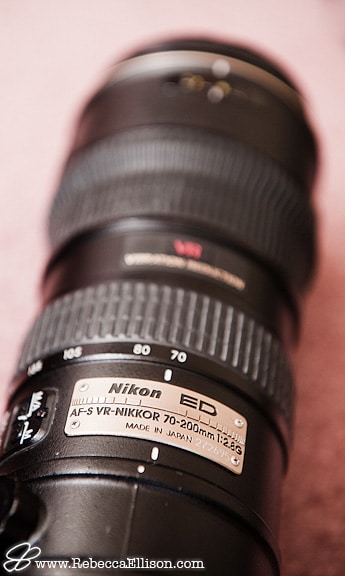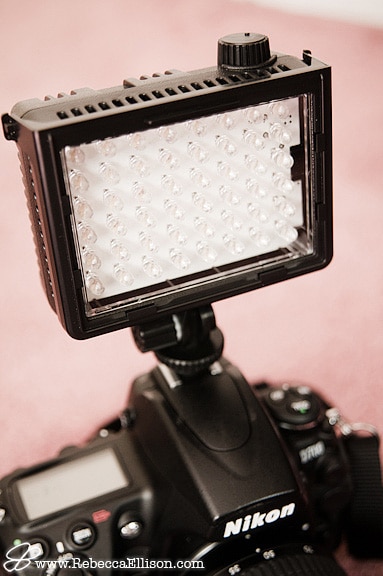It’s funny how when film was the medium of choice, the interest that was in the camera’s photo bag seemed much lower. Or at least not as many people understood what you meant when you start rattling off 24-70 2.8 fixed or something of that sort. People’s eyes became glazed over and they mumbled something or other and found a way to get away quickly. But, now with digital, photographers are much more prevalent, or maybe it’s just that with Google at all of our fingertips via those snazzy iPhones, Droids and Gphones, we can find out so much so quickly, and can fake like you know what I said while you run to the “restroom” typing frantically on your smart phone trying to find out what this 2.8 nonsense I keep talking about is…
or 1.4 nonsense that makes me drool…
I thought it would be fun to do a little post about what is in my camera bag. What I can’t live with out and what I keep on hand for that *just in case* situation. And fair warning to all, this is a bit of a long post, so be warned!
For those of us photo geeks out there that know all the models of the gear I just mentioned, you know know what it is I carry to every wedding, maternity, newborn, family or boudoir session I photograph. And that isn’t even all of it!
I also have Dynalite strobes (which rarely come to a wedding, but usually come to portrait sessions that are inside), a video light which I want to use more, and many light stands, softboxes and umbrellas that help me control the light I have in my image!
For those that just looked at the picture and saw a sea of black electronics with poorly drawn red arrows pointing at them and names that make no sense… let me explain.
I am a Nikon shooter, which in many circles ends up starting this debate about Nikon vs. Canon. It’s like VW vs. Honda where many a brand has the ability to cause deep loyalty, or lovemarks of their customers. I like both brands just fine, but I find the images and the ergonomics of a Nikon camera much more pleasing to me than that of Canon.
*sidenote: the Nikon vs Canon debate is so prevalent that someone made a music video that is pretty funny about it. Check out that link if you want a laugh.
My main stay that you will see me shooting with 70% of the time is my Nikon D700 with my 24-70 F2.8 lens. This combo makes for some AMAZING shots! I recently upgraded to the D700 camera body from the D300 to take advantage of the full frame feature and it’s high ISO abilities. Mainly because, as a wedding photographer, I find myself regularly in very small rooms photographing a bride getting dressed and I need a camera that let me be 4 feet from my bride but still be able to shoot her in her entirety.
Also, many couples get married in churches, and churches can have some spectacularly strict guidelines of what us photogs are allowed to do during the ceremony. That almost never includes using a flash.
I understand.
The ceremony is about the commitment one is making to another and, if you are in a super dark church, having a flash pop every 5 seconds can be distracting. So, this forces us to jack up the ISO (film speed) on our camera. 5 years ago, this made a decent size problem, as, my camera’s could be set to that setting, but the quality of the images was trash, so I never did it.
With my D700, I can easily shoot at ISO 4000 or 6400 and produce a usable, beautiful image with just available light. Granted, I would rather shoot at 200 or 400 if I could, but sometimes the situation doesn’t allow. My last camera was okay at 1600 or 3200 but that was pushing it. Now I don’t even have to think about it! There are cameras out there that they say provide a usable image at 12,000 ISO which is AMAZING! But I don’t currently have $8000 to throw down on that beauty.
My 24-70mm F2.8 is also a relatively new purchase. The 24-70mm is such a great lens as it is fast, fast, fast, fast, fast. And sharp, sharp, sharp, sharp, sharp. I LOVE it.
For those who don’t know what people mean when they speak of a fast lens or a fixed lens, here it is. * If you know, you might as well just hop to the next paragraph*.
Fast has to do with a couple of things, but mostly fast has to do with your aperture. That is the number after the F in my picture above The aperture is what controls how deep your focus is in the shot. So when you see a landscape shot and everything is focus, they closed down their aperture(F22) to get it that way. When you see a photo of a bride holding her flowers towards the camera and the flowers are in focus, but the bride isn’t, that is because the the aperture is wide open (F2.8). The smaller the number is, the faster the lens is. It’s faster because it lets you bring light in faster the lower the number and you can shoot in lower light situations without being tied down to a hulking tripod to get a clear image. And when we say fixed, it also is good, because that means that you can shoot at F2.8 at the widest and longest ends of your lens.
Many cheaper lenses don’t let you stay wide open (2.8 ) the farther you zoom. So to zoom in on a groom crying while looking at his bride walking down the aisle in a dark church, where you are already shooting at 1/10 of a second, you don’t want to have to shoot at 1/4 or 1/3 of a second just because you want to zoom in on his face that is in awe of the lady walking down the aisle. Cheap lenses make you make that decision. Good lenses don’t. That in itself is reason enough.
Reason #2 is because a fixed lens is always made with better glass, so you have a sharper image and the quality of your work goes WAY up!
The 24-70mm F2.8 fixed Nikkor lens is my baby. It works for most of what I do, and I always have it near by.
My next go-to lens is my 70-200mm F2.8 fixed Nikkor lens. This guy is an oldy but a goody. You can photograph people from across the room at a reception, catch a great moment, and the subject never knew you were shooting them. And because it is a telephoto, I can be across the room, but zoomed into your upper body/ face so the image is more impactful ( wordpress spellcheck doesn’t think that is a word, but I do so I am running with it). This lens is a bit of a beast though as it is almost a foot long.
It isn’t fun to shoot with all day because of its size ( and the pain in your arm for holding it up and steady all day long). Because it is a telephoto lens, though it is a BEAUTIFUL portrait lens. I usually use this during the portraits, ceremony and reception on and off. Telephoto lenses are great because their nature is to slim you down. A wide lens will make you look wider and a telephoto lens will help you look a bit smaller. I am not talking magic here people… that would be Photoshop, but telephoto lenses does make for some great images.
The other magnificent thing about this lens is that it is a VR lens. That means vibration reduction. Nikon (and Canon’s fancy term for the same thing is IS for image stabilization) puts VR (or IS) in these larger lenses to help you hand hold at an even lower shutter speed. When in those crazy dark churches, I put my low as I can get away with, but it is usually still pretty high, then I shoot at F2.8 to ensure I can have the fastest shutter speed possible for the right exposure. Sometimes that is 1/30 of a second… sometimes its 1/8. And having a VR lens that helps steady your camera (I have no idea how, but I will stay happy to know it works) and give you the ability to shoot at 1/8 of a second and still get a clear shot. I heart me a VR lens.
And yes, I can shoot at 1/8 of a second and get a clear shot. Not always, but pretty regularly. It’s about bracing yourself, timing your heartbeat, holding your breath and seeing what happens. A steady hand is important! And lots lots lots of practice helps too!
My other two lenses get a lot less play, but that is because I like zoom lenses more than prime (fixed focal length) ones. I like to not have to move all over the place to find the shot I want when working with weddings or young kids where my shutter finger and composition must be fast not to miss a great moment. That being said, I know some amazing photographers that only shoot prime lenses and it does them some magic. It’s just not my preferred magic.
My 50mm F1.8 is my fastest lens, and my 24mm F2.0 is my second. Because they are primes, they don’t see much action. And the 24mm F2.0 is a manual focus lens. Manual focus is also not high on my list of things that make me want to dole out the high fives. They are great sharp sharp lenses, and the 50mm gets used a lot more than the 24mm. The 50mm is fantastic when I truly want to control focus.
Next come my flashes. I have three but really only ever use the two. The SB900 and SB800 (and the SB600 which is one of my “I can’t afford the one I really want so I will buy this one” mistakes. So it comes for backup reasons but never really comes out of the bag) . I can use the 900 on my camera, while using my pocket wizards ( which are radio slaves to remotely trigger the flash when I shoot) on the 800 on a light stand at the edge of the room. This way, I can get great, fun lighting with out it looking flat with just my on camera flash. In the old days, guys would have to have a sync cord attached to the camera and the flash to do this. And that would not work in a wedding situation. So hallelujah for Pocket Wizards!
To add to my flash, I carry a Quantum turbo battery pack.This guy attaches to my flash via a nifty cord and works as a super badass, awesomely fast battery charger on top of my rechargable AAs. This battery pack lets me be recharged and ready to have a full power charge on my batteries in 1-2 seconds after I take a picture instead of the 3-6 I usually would wait for on a regular AA system ( or 10-15 seconds if my batteries were low). I look pretty geeky carrying this thing around, but I got over my want of looking cool while shooting some time ago. I have realized it just doesn’t really happen.
Rechargeable batteries are the way to go in my mind. Because, if I used regular batteries for all the weddings, events, and portraits sessions that I have photographed, I would probably fill my own mini landfill. And to make things worse, you can’t recycle AA batteries. They just chuck them in el trasho at the dump. I have on me usually around 20 rechargeable batteries at a wedding, even though, with my Quantum battery pack I don’t go through them all.
I have somewhere around 40 gigs of compact flash cards. A portrait session I will usually go through 4 gigs, and a wedding somewhere around 25-30 depending on the package. And I make sure to always have enough. If I end up not having enough though, I always have my PhotoSafe backup drive or my laptop with me.
The PhotoSafe downloader lets my insert my CF card and download/ backup my cards. If you see my assistant sitting in the corner at the reception, this is generally what they are doing. The sooner I have my images in two spots the safer I am. When I get home, I backup all images to at least three different spots to ensure if a drive fails, I won’t loose anything!
My video light is a new addition and I am excited to be able to use it more this season. It usually wouldn’t be on the camera, but my assistant would be carrying it for me helping me make awesome light when strobes/flash are too powerful.

So. That is my camera bag. My trusty companions that come with me on every shoot and let me make my art!
Questions are welcome!











Now, I am really curious… What does your camera bag look like? It must be pretty big… 🙂
Now, I am really curious… What does your camera bag look like? It must be pretty big… 🙂